Oishiku meshi-agare! (“Eat deliciously!”)
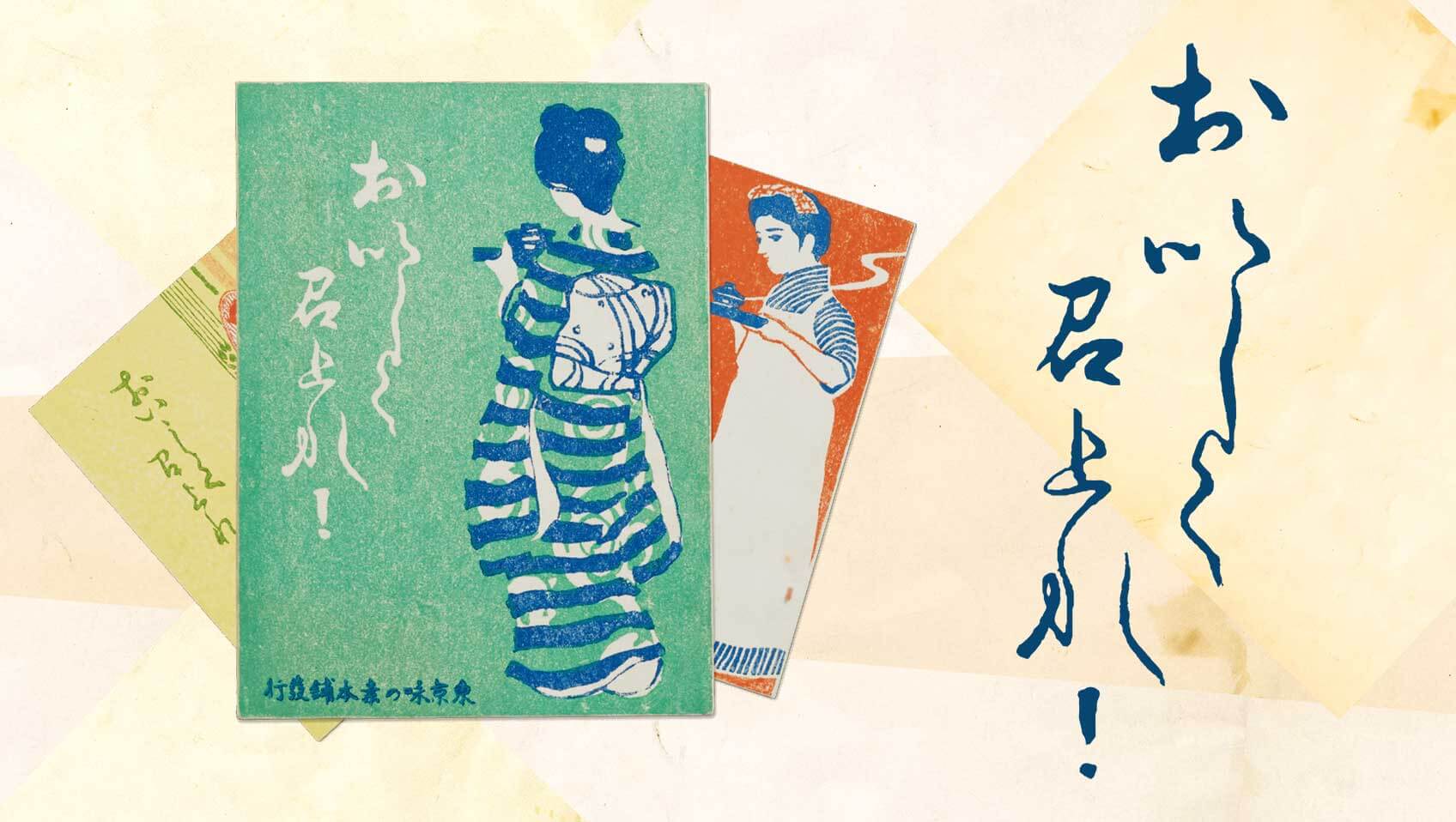
Oishiku meshi-agare!—literally, “Eat deliciously!”
Or, as we might say today, “Enjoy your meal!”
From the cook in the kitchen to the diner at the table,
these magic words bring everyone good cheer.
Table of Contents
1. Why we say "Eat Deliciously!"
At the beginning of the twentieth century, modernization was transforming Japan.
Newly founded, Ajinomoto Co. wanted to share with people the joy of cooking, the happiness in partaking of a delicious meal.
So, in 1910, we published a booklet on cooking.
It was called Eat Deliciously!
Today, over 110 years later, our desire to spread joy and happiness hasn’t changed.
We’re living in tumultuous, unprecedented times.
So, more than ever, we want people to enjoy their food and to eat well.
This is behind everything the Ajinomoto Group does.
We will continue to help more people “Eat deliciously!”
For those special people in your life.
For those friends you’re thinking of but cannot meet.
For your co-workers, and, most of all, for yourself.
We want you to join us in saying, “Eat deliciously!”
2. The idea behind our Eat Deliciously Project
AJI-NO-MOTO® umami seasoning—the product on which our company was founded—was born at a time when Japan’s old, traditional values were changing rapidly.
But, even back then, one thing Japanese people could all agree on was the importance of sharing delicious food together.
We were reminded once again of this love of cooking, so deeply rooted in Japanese culture, by this little booklet published over a century ago.
Our Eat Deliciously Project is our way of passing on—to both current and future generations—the joy of cooking, the fun of discovering delicious food, and the happiness of eating together, in gratitude to all those who have supported us over the years.
3. The booklet that helped launch a new seasoning
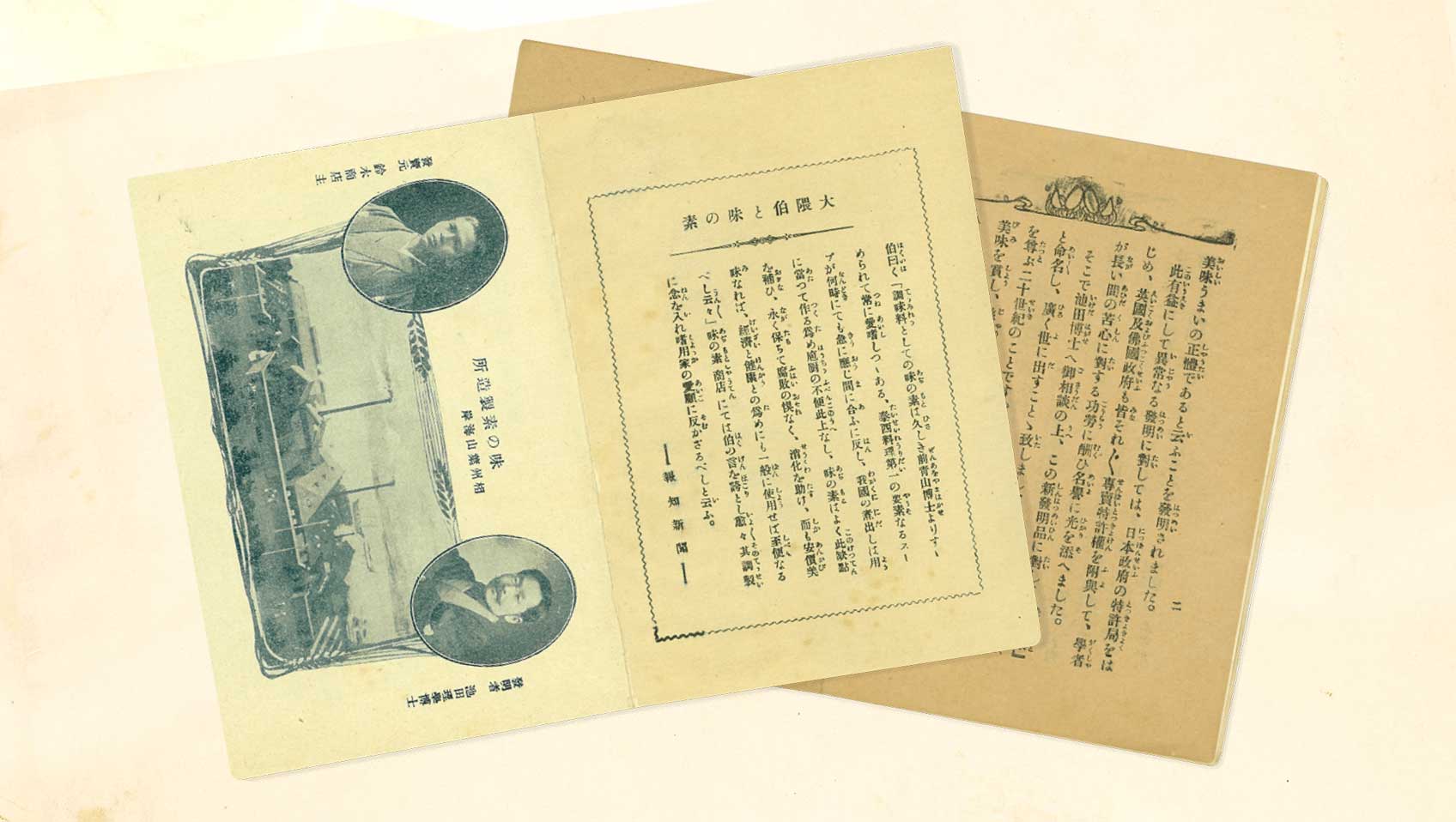
Eat Deliciously! A century-old booklet on cooking
AJI-NO-MOTO® umami seasoning was launched in 1909. Japan was on the cusp of a new era, one characterized by modernism in popular culture. For ordinary Japanese people, everything imported from the West was, as we might say today, trendy. Western cuisine was being adapted to Japanese tastes, giving rise to a fusion food culture entirely unique to Japan.
It was a vibrant and exciting era, and AJI-NO-MOTO® proved a hit. Before too long, everyone was talking about the modern and fashionable new seasoning. Eat Deliciously! was published to help consumers better understand what it was and how to use it.
In language startlingly familiar to our twenty-first century ears, Eat Deliciously! explained how to use AJI-NO-MOTO® to realize greater “efficiency” and “economy” in the kitchen. For us today, it also affords a rare glimpse into the lives of those early twentieth-century Japanese cooks who enjoyed delicious food and incorporated this most scientifically advanced of seasonings into their new, modern lifestyles.
-
Because it dissolved easily in both hot and cold water, AJI-NO-MOTO® afforded home cooks a convenient way to prepare broth with little time or effort, and it could be stored for years with no diminishment in quality. It was also touted as a miracle flavor enhancer suited to any type of food, from Japanese and Western fare to vegetarian dishes.
Reported to be “perfectly safe and hygienic,” based on tests conducted by Japan’s Interior Ministry, AJI-NO-MOTO® appealed to the growing number of home cooks to whom hygiene was as important as nutrition and economy.
It was even recommended to slip a bottle of AJI-NO-MOTO® in one’s bag or pocket when traveling or on the go, so one could always have delicious food even when away from home.
In those days, broth—both Japanese and Western—was an indispensable ingredient in every middle- to upper-class kitchen. But preparing it morning and evening could easily take an hour per day, or fifteen full days per year. Using AJI-NO-MOTO® instead enabled home cooks to devote that time to other work.
-
In 1908, Dr. Kikunae Ikeda, a professor at Tokyo Imperial University, succeeded in extracting the amino acid glutamate from kombu kelp. He determined that it was the substance responsible for the delicious taste of many foods, starting with kelp broth, and he dubbed this as-yet unknown flavor “umami.” This was the moment when the world came to learn of the existence of a fifth taste, in addition to the four basic ones––sweet, sour, salty, and bitter––recognized at that time. The following year, monosodium glutamate was launched under the brand name AJI-NO-MOTO®, becoming the world’s first umami seasoning.
-
In 1909, AJI-NO-MOTO® was completely unknown. It was, after all, the world’s first umami seasoning—Japanese consumers had never seen anything like it. So, in Eat Deliciously!, Ajinomoto Co. set out to explain exactly what AJI-NO-MOTO® was and how to use it. The booklet’s title was carefully chosen to convey the message that AJI-NO-MOTO® could make daily meals more enjoyable for cooks and diners alike.
by Mioko Hatanaka, Food Journalist
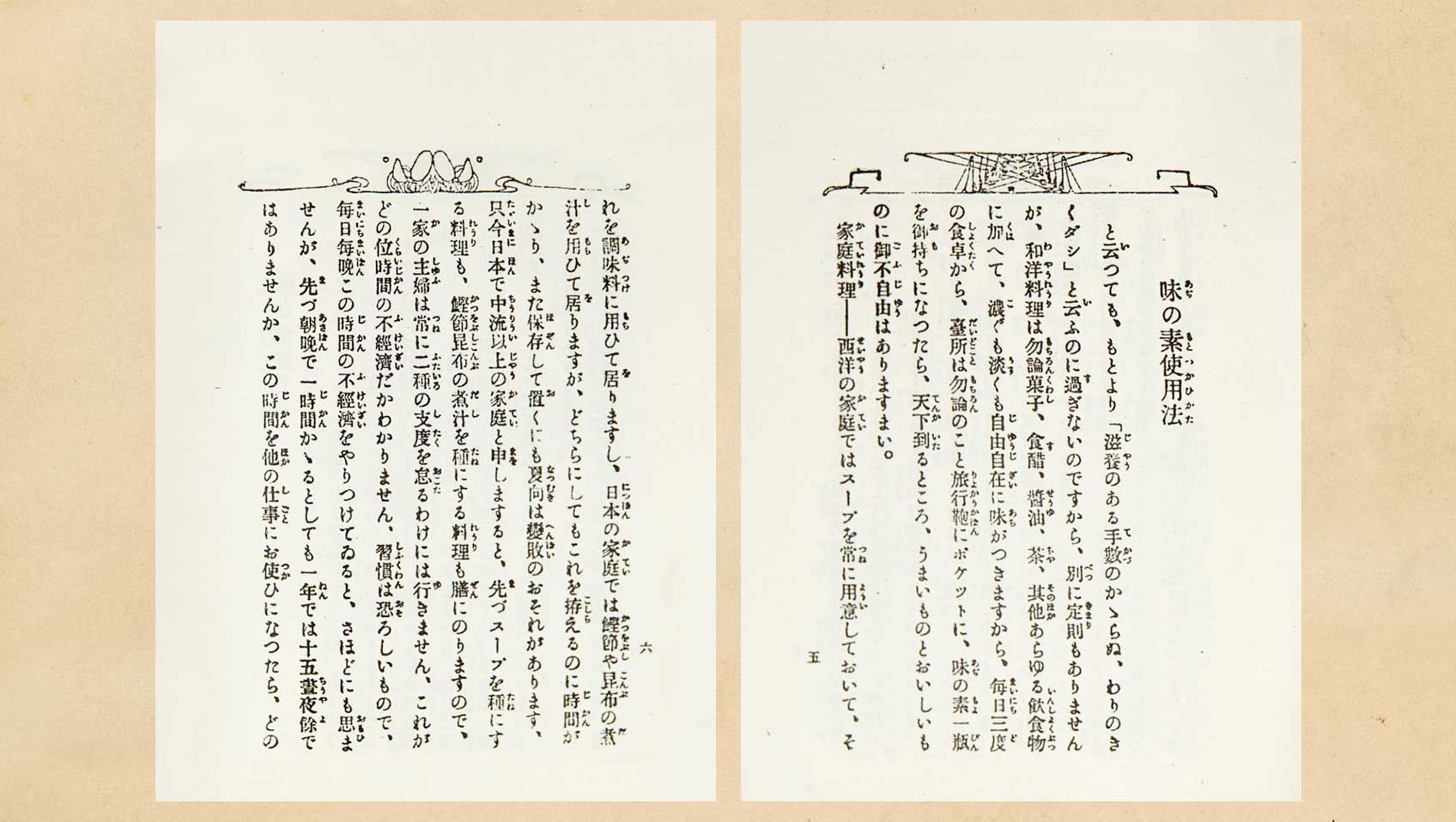
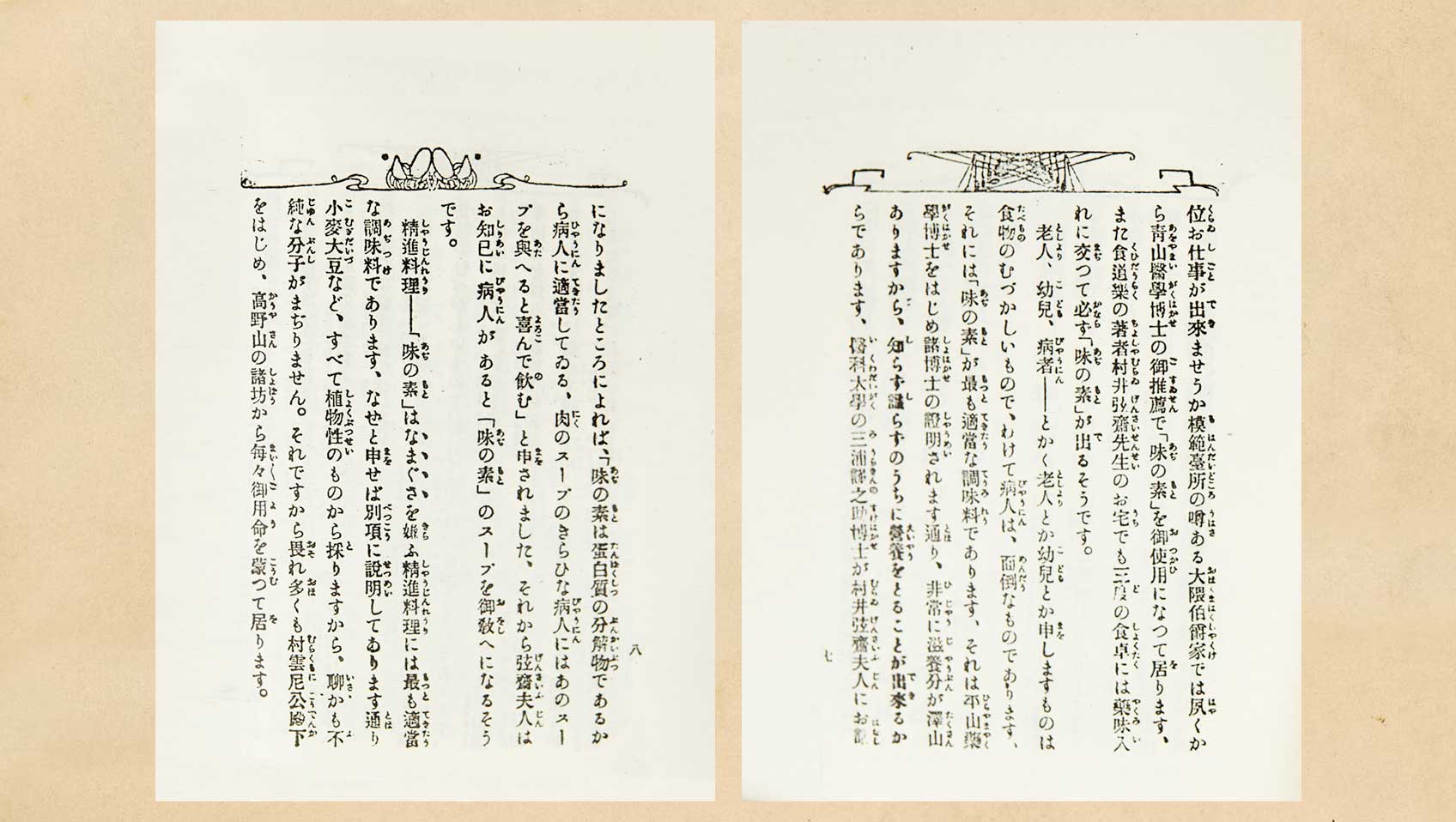
How to Use AJI-NO-MOTO®
Actually, there are no special rules for how to use AJI-NO-MOTO® since it is just a time-saving broth extract. It can be added to either Japanese or Western cuisine, as well as confectionery, vinegar, soy sauce, and all manner of foods and seasonings, in as strong or weak proportion as you like. So long as you have a bottle of AJI-NO-MOTO® on your dining table or in your kitchen, travel bag, or pocket, you will never be in want of delicious food no matter where you are.
At home: Western families always prepare bouillon for seasoning dishes, while Japanese families use broth made from dried bonito flakes or kelp, both of which take a long time to prepare and can spoil in summer when stored. Nowadays, in Japan, any middle-class family or above will have dishes on the table made with both Western- and Japanese-style broth, so a housewife must always prepare both types. Ladies, you don’t know how much time you’re wasting. Habit is a terrible thing, and if you do this every day and every night, you might not think much of it. But assuming you spend an hour per day between dawn and dusk, that’s more than fifteen days and nights a year you are wasting. How much other work would you be able to do if you used this time for something else? Count Okuma’s household, which is rumored to have a model kitchen, has for some time been using AJI-NO-MOTO® as recommended by Dr. Aoyama. Also, at the home of Gensai Murai, the author of books on gastronomy, a bottle of AJI-NO-MOTO® is said to be put on the table at every meal.
The elderly, children, and the sick: The elderly and children are often difficult to feed, and the sick are particularly troublesome. For them, AJI-NO-MOTO® is the most suitable seasoning. Dr. Kinnosuke Miura of the medical university told Mrs. Gensai Murai, “AJI-NO-MOTO® is made by breaking down proteins in amino acids. If you give a soup made from it to a sick person who doesn’t care for meat soup, he will gladly drink it.” Mrs. Gensai then said that if she knew of someone who was sick, she would be sure to tell them about it.
Vegetarian cuisine: AJI-NO-MOTO® is the most suitable seasoning for vegetarian cuisine. As explained elsewhere in this text, it is made from wheat, soybeans, and other plant-based ingredients, so it does not contain any impurities. For this reason, we are honored to receive requests for AJI-NO-MOTO® from Her Imperial Highness Abbess Murakumo and many of the priests of Mount Koya.
4. AJI-NO-MOTO® and the Advent of Japanese Home-Cooking
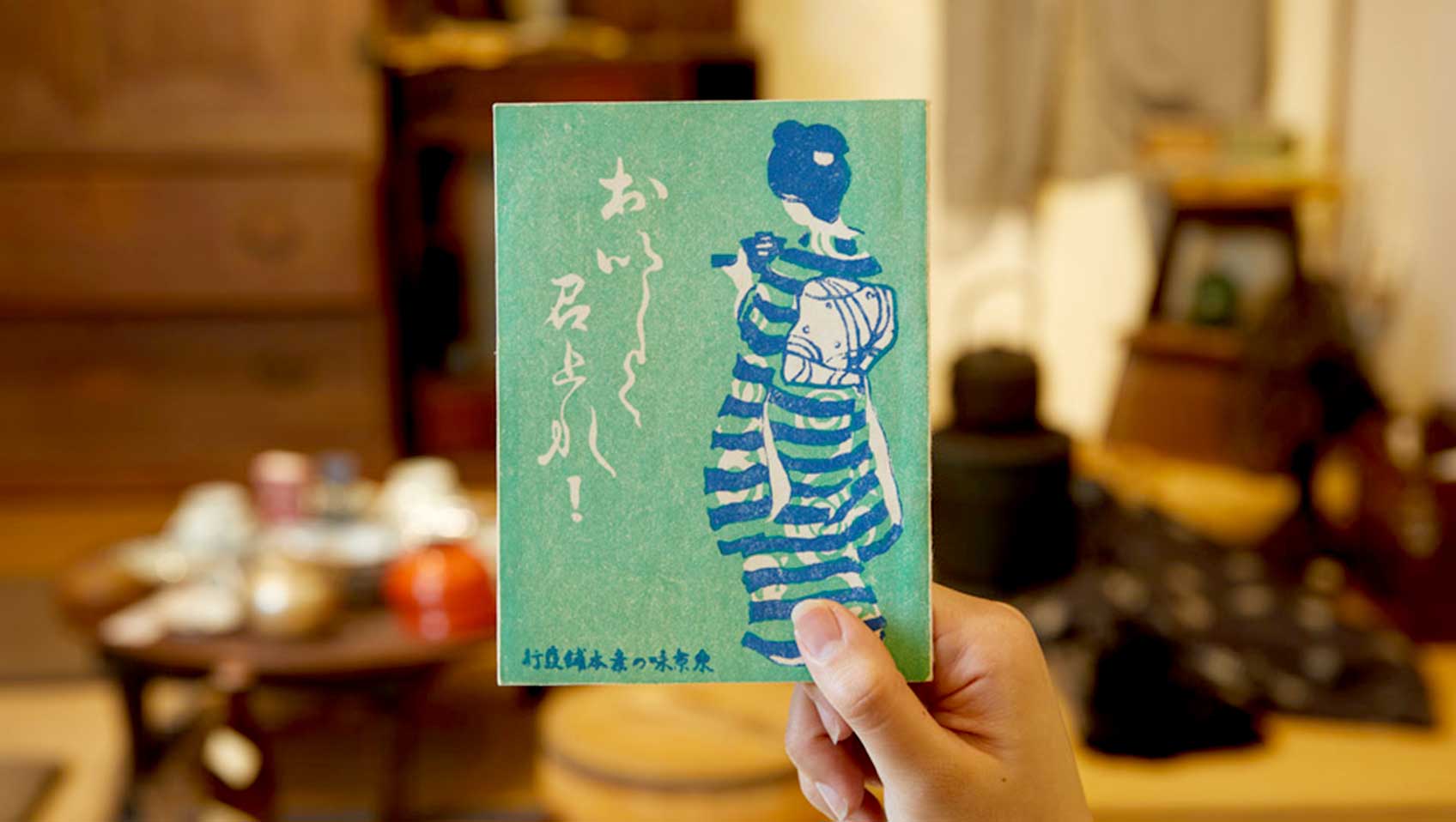
Let’s begin with a brief history of eating habits in Japan from the late nineteenth to early twentieth century.
Starting with the Meiji Restoration of 1868––when Japan’s feudal government was replaced with a Western-style constitutional monarchy––Japan underwent a period of rapid modernization. Food was no exception. With the lifting of the ancient prohibition on eating meat, and the introduction of Western cuisine, the Japanese diet underwent major changes. Over the next several decades, a culture of home cooking arose, and the role of the Japanese housewife was established.
Up until 1868, cooking had been considered man’s work. The kitchens of all the great samurai houses of Edo (now Tokyo) were staffed by men, while the lower-ranking samurai who attended them were expected to cook for themselves. Although women in agricultural and mercantile families were in charge of preparing meals, this was not so much home cooking as we think of it today, but closer to subsistence living.
Preparing Delicious Meals becomes a Housewife's Duty
With the advance of industrialization after 1868, men increasingly found work outside the home in offices or factories, while women stayed at home caring for children, cooking, and doing housework. This was the origin of Japan’s modern family structure, with clearly defined gender roles. Around the same time, the study of home economics was introduced from the West. Girls’ secondary education was developed to teach cooking, sewing, and childrearing to young women, with the goal of making them into “good wives and wise mothers,” as the saying went. In 1882, Japan’s first cooking school for housewives, the Akahori Cooking School was opened, and it continues to this day.
During these decades, the idea took root that a housewife’s duty was to prepare and serve delicious, economical meals. Every year, more and more cookbooks aimed at home cooks were published. At first, these were modeled on cookbooks for professional chefs. But gradually, a new concept of home cooking emerged that incorporated Japanese, Western, as well as Chinese cuisine.
The 3 Pillars of Home-Cooking: Nutrition, Hygiene, and Economy
Toward the end of the nineteenth century, as Western scientific knowledge became more widespread, greater emphasis was placed not just on taste and variety but also nutrition and hygiene. In addition to economy, these became the pillars of Japanese home cooking.
Customs around dining were also changing. Families belonging to Japan’s burgeoning urban middle-class adopted the practice of eating together, seated on the floor around a low dining table, instead of from individual trays, as was the former custom. As this practice spread nationwide, observers pointed approvingly to the social and psychological benefits of family dining.
The growing numbers of urban middle-class housewives, educated at the country’s girls’ schools to be “good wives and wise mothers,” pored over cookbooks and women’s magazines, diligently honing their home cooking skills to make healthier, more delicious food for their families.
Starting in the 1910s, gas, electricity, and running water became an increasingly common feature in middle-class homes, and modern kitchens were introduced for the first time in Japan. These enabled home cooks to work standing up, as opposed to squatting on the floor as in traditional Japanese kitchens. In 1913, the monthly magazine Ryori no Tomo (Friends of Cooking) was launched, introducing a variety of Japanese, Western, and Chinese recipes aimed at home cooks.

Stoves in traditional Japanese kitchens were very low and cooking was done while squatting on the floor.
Just at this time, when access to modern amenities and accurate dietary information was raising the level of home cooking, AJI-NO-MOTO® was launched to meet the needs of home cooks. It proved a great success.
Eat Deliciously! is a living testament to people’s love of food and cooking in those distant times. That much hasn’t changed. For us, it’s exciting to think of men and women, just like us, whether home cooks or professional chefs, cooking with AJI-NO-MOTO® for the very first time. What delicious meals did they create with it, and what was their reaction when they tasted it? One can only imagine!
by Mioko Hatanaka, Food Journalist
5. Contributing to sustainable cooking for over 100 years

What can Eat Deliciously! teach us about social issues?
AJI-NO-MOTO® ’s century of commitment to SDGs
by Ken Ogiso

Ken Ogiso
I don’t know about you, but the first word that came to mind when I saw this reprint of Eat Deliciously! was “SDGs.”
But before I explain, perhaps an introduction is in order.
My name is Ken Ogiso and I’m a specialist on internet literacy. I give lectures and write books on social networking and various aspects of our digital lives. In other words, cooking is not my bailiwick. So, why am I participating in the Eat Deliciously Project?
When I was younger, I used to eat a lot of udon noodle soup, and the chef at one restaurant I frequented gave me a recipe for udon noodles with spicy cod roe (mentaiko). But the first time I tried to make it myself, somehow the taste just wasn’t right. Something was missing. So, I sprinkled a bit of AJI-NO-MOTO® on top, and suddenly the flavors all came together––it tasted amazing!
Last year, the Ajinomoto Group invited me to participate in its First Food & Wellness Future Forum. I was fascinated to learn about the long history of AJI-NO-MOTO® umami seasoning. Afterward, I wanted to find out even more. So, when I heard that the original Eat Deliciously! booklet—published in 1909, just after AJI-NO-MOTO® was invented—was going to be reprinted, I begged the company to let me become involved in the project.
Anyway, getting back to the subject of SDGs, lately we’ve been hearing about these a lot, but not everyone may know exactly what they are.
SDGs—or Sustainable Development Goals—are a collection of 17 international goals adopted by the United Nations General Assembly six years ago, in 2015, for all countries around the world to work toward. The SDGs are designed to serve as “a blueprint to achieve a better and more sustainable future for all people and the world by 2030.” You can find out all about them online at https://sdgs.un.org or by searching “SDGs”.
You’ve probably been seeing this chart a lot lately. The seventeen colored tiles each represent a different SDG. Since 2019, when the Japanese government called on the private sector to cooperate in helping Japan reach its targets, more and more companies have launched their own SDG-related initiatives. Now, companies and organizations everywhere are using their respective expertise to work toward achieving these goals.
Working toward Gender Equality: AJI-NO-MOTO® is a 100-year-old Life Hack!

So what’s the connection between Eat Deliciously! and SDGs?
Let’s begin with Sustainable Development Goal 5: Gender Equality.
This SDG aims “to achieve gender equality and empower all women and girls.” It does so by seeking not only to eradicate persecution and discrimination against women, but also to enable women to perform paid work outside the home by promoting shared domestic responsibilities.
Eat Deliciously! focuses on the daily practice of making broth for home cooking, which was time consuming and inefficient. It asks:
How much other work would you be able to do if you used this time for something else?
It suggests that by using AJI-NO-MOTO®, readers could reduce the amount of time spent in the kitchen by “fifteen days and nights a year,” or 365 hours. Remember, this was written over 100 years ago! Today, we might call this time-saving innovation a “life hack.”
Historically, the ability of women to perform paid work outside the home has been tied to the introduction of more efficient home appliances. As late as the 1950s, when fully automated washing machines were becoming widespread, some men ludicrously claimed that labor-saving appliances “make women lazy.” And to think that four decades earlier there was already a product on the market––AJI-NO-MOTO®––aimed at making housework more efficient!
But that’s not all.
Responsible Consumption and Production: Food Waste was Already a Problem in the 19th Century!

Now let’s look at Sustainable Development Goal 12: Responsible consumption and production.
This SDG is aimed at achieving “sustainable consumption and production patterns to ensure good use of resources and a better quality of life for all.” Specifically, its targets include reducing food waste by retailers and consumers, food loss along production and supply chains, and waste generation through reduction, recycling, and reuse.
According to Eat Deliciously!:
Broth made from dried bonito flakes or kelp…can spoil in summer when stored.
Methods of food preservation were still quite primitive in those days, meaning food often went bad and had to be thrown away, especially in hot weather. But Eat Deliciously! offered a solution:
AJI-NO-MOTO® will never spoil or change its taste even after many years.
In other words, since AJI-NO-MOTO® can be stored for a long time, in summertime it could be used to avoid having to throw away spoiled food.
You’ll have to agree that this “sustainable” thinking was way ahead of its time!
Indeed, the same applies today. If everyone started making their own broth from dried bonito flakes and kelp instead of using umami seasonings like AJI-NO-MOTO®, it would inevitably lead to less efficient food consumption and increased food waste. Of course, nothing can beat home-made broth, and taking the time and effort to cook from scratch using fresh ingredients is wonderful. I’m a big proponent of it. But neither should we criticize those who can’t or don’t cook. Some of the loudest critics of convenience foods are people who don’t even cook themselves. I think that’s a little strange.
Many people are too busy to cook, so it’s great there are convenient options for people who still want to prepare delicious and nutritious meals in a short time. Plus, if it can help reduce food waste, what could be better?
Realizing a more sustainable future for all is the greatest challenge facing humanity in the 21st century. What do today’s SDGs and the century-old Eat Deliciously! have in common? Simply that “food,” “umami,” and “deliciousness” are universal and essential.
It is our hope that everyone who reads this website will identify with and be inspired by the love of cooking that grew out of that era in Japan over a century ago.
And to all the cooks who carry on that tradition today, tomorrow, and into the future, we say, “Eat Deliciously!”
